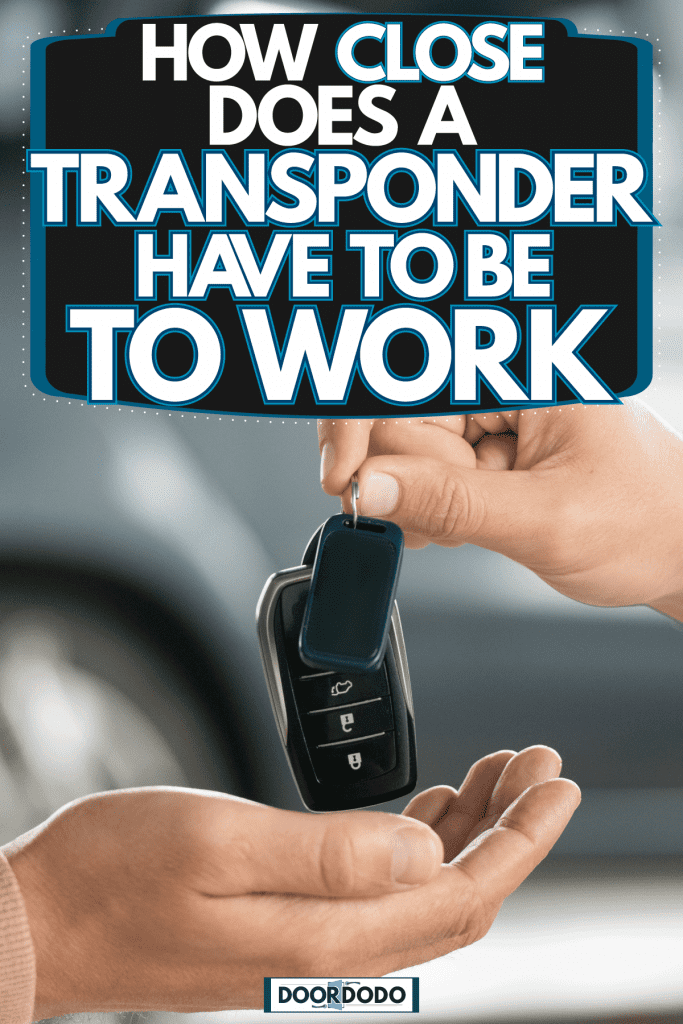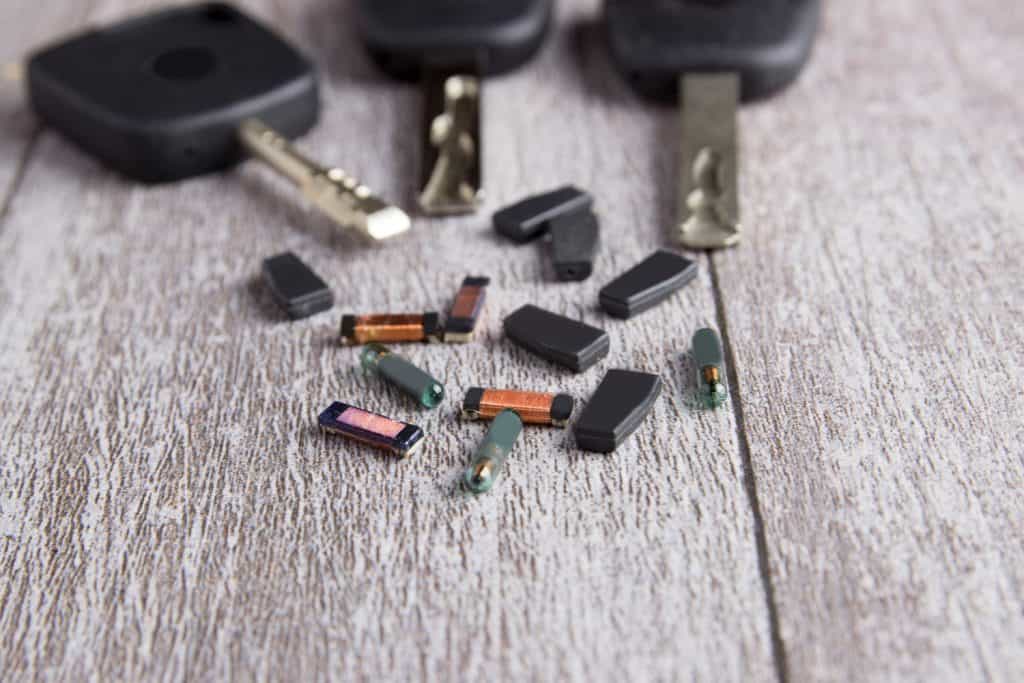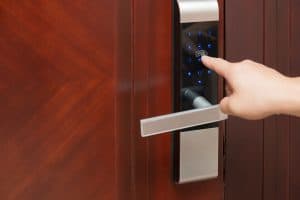Are you wondering if a transponder key will work even when it's not inside the ignition switch? How far can it be from the receiver for it to be able to override the immobilizer in your car and get it to start? We've done the research for you and here's what we found out.
A transponder key has to be between 1-centimeter and 15 centimeters for it to be able to transmit a signal to its receiver inside the car. Once the vehicle's computer detects matching serial codes between the key and the car's ignition, the immobilizer will be lifted and you'll be able to get the engine to start.
Continue reading so we can tell you more about why transponder keys have to be really close to the receiver area. We'll also share with you if these keys go bad, if you can bypass them, and if they need to be cut. Let's start!

How do car transponder keys work?
Vehicles that have been manufactured in the past two decades come with transponder keys. These are part of the manufacturers' anti-theft measures since transponder keys make hotwiring a car virtually impossible.
Transponder keys may look like a regular key to you but they contain a microchip inside the plastic head of the key. This microchip has been programmed by the manufacturer with the vehicle's unique serial code, giving it its very own digital identity.
Once you insert these keys inside the ignition lock cylinder and turn them, they transmit a low-level signal to the automated receiver inside the car's ignition system. This is made possible by radio frequency identification or RFID.

Once the receiver is able to read the matching serial code contained in the microchip, it unlocks the immobilizer in the ignition and you'll be able to get your car to start.
This is how transponder keys enhance the security of your car. Without the exact information in the microchip, you won't be able to start your vehicle. When the receiver doesn't read the same serial code on the transmitter, it won't deactivate the immobilizer in the car.
However, for these keys to work effectively, your key must be inside the ignition switch itself so that the receiver can detect the signal. Transponder keys are magnetic coupled systems. They only work when the transponder and receiver are only 15 centimeters apart at the most.
The RFID is able to penetrate or read the information inside the microchip even if it is covered by plastic. The only requirement is that it should be within the immediate vicinity of the lock since the signal that it transmits is very weak. The receiver won't be able to detect it if it were any farther than 15 centimeters.
Does a transponder key need to be cut?

This is a tricky question. Yes the key needs to be cut. However, transponder keys aren't like traditional keys that can simply be copied. It would take a lot more than just to cut a new key for you to have a transponder key.
Remember, transponder keys have a microchip in them that has been programmed with the vehicle's unique serial number. So, even if you have a new key made, you still have to have it programmed with the exact serial code of your vehicle for it to work on your ignition.
Sure, the unprogrammed key can open the car door but you won't be able to use it to start your car. The RFID won't work. And if you've lost all your car keys, that can be a problem.
When this happens, you can ask your authorized car dealer to replace your transponder key. They can get the exact details from your car manufacturer or read your vehicle's frequency ID and be able to do the programming for you. But it comes with a huge cost.
You can also try your luck at your local locksmith if you want to save some bucks. But they must have the special equipment needed to program the key for you. They may also have access to the database to get the key code.
If you still have the master keys with you and would just like a spare transponder key for an emergency, check your owner's manual for the programming procedure. It should be easy enough to copy the code if you have the original keys with you.
Do transponder keys go bad?
Yes, transponder keys can go bad that's why you have to take good care of them. Take note that they are electronic devices so when water seeps through the tiny openings in the key case, the microchip can get damaged.
These keys can also become worn out over time. They can become rusty or corrode when frequently exposed to moisture. Dirt and grime can also cause them to malfunction.
When you've got a bad transponder key, you might find it hard to start your car. The microchip won't be able to transmit the needed signal to the receiver so the immobilizer in your car is still in effect. You will also see a key symbol on your dashboard to notify you that something is not right.
Make sure you protect your transponder keys. You can put it in a protective case when you're not using it. Don't add other items on your keyring as they would add weight and pressure on your key and ignition. It's also best to clean and lubricate your transponder keys so they will work efficiently.
Find this powdered graphite lubricant on Amazon.
Can you bypass the transponder key?
Although transponder keys are meant to act as an extra security layer for your car, there is a way to bypass them. But you need to have an exact copy of the car key (unprogrammed) and a working transponder chip.
Here's how to do it:
- Start by removing the microchip from your car key. Since the key cover is very tight, you can use pliers or a screwdriver to push it open.
- Take off the chip. It can be a clear tube or black square.
- Put the chip on a masking tape.
- Attach the microchip close to your car's ignition lock.
- To see if it will work, use the old key (without the chip in it) or the unprogrammed copy of your car key. Insert the key into the ignition and turn it. The receiver should be able to read the signal coming from the microchip and deactivate the immobilizer.
- If your vehicle won't start, try repositioning the microchip closer to the ignition lock then turn the key again.
- Once you've found the sweet spot for your microchip, secure it in its place by using superglue.
The programmed microchip is the essence of your transponder key. As long as it's around, it will be able to send the signal to the receiver in your car.
Take note that you should only use a regular car key (without a chip) when you do this. When you use another transponder key, there might be signal interference that can prevent your car from starting.
Final Thoughts

A transponder key or its microchip has to be in close proximity to your ignition lock for it to be able to unlock your vehicle's immobilizer and get your car to start. Take care of it properly to avoid any inconvenience when using it.
If you want to know more about transponder keys, you may visit the following links:




